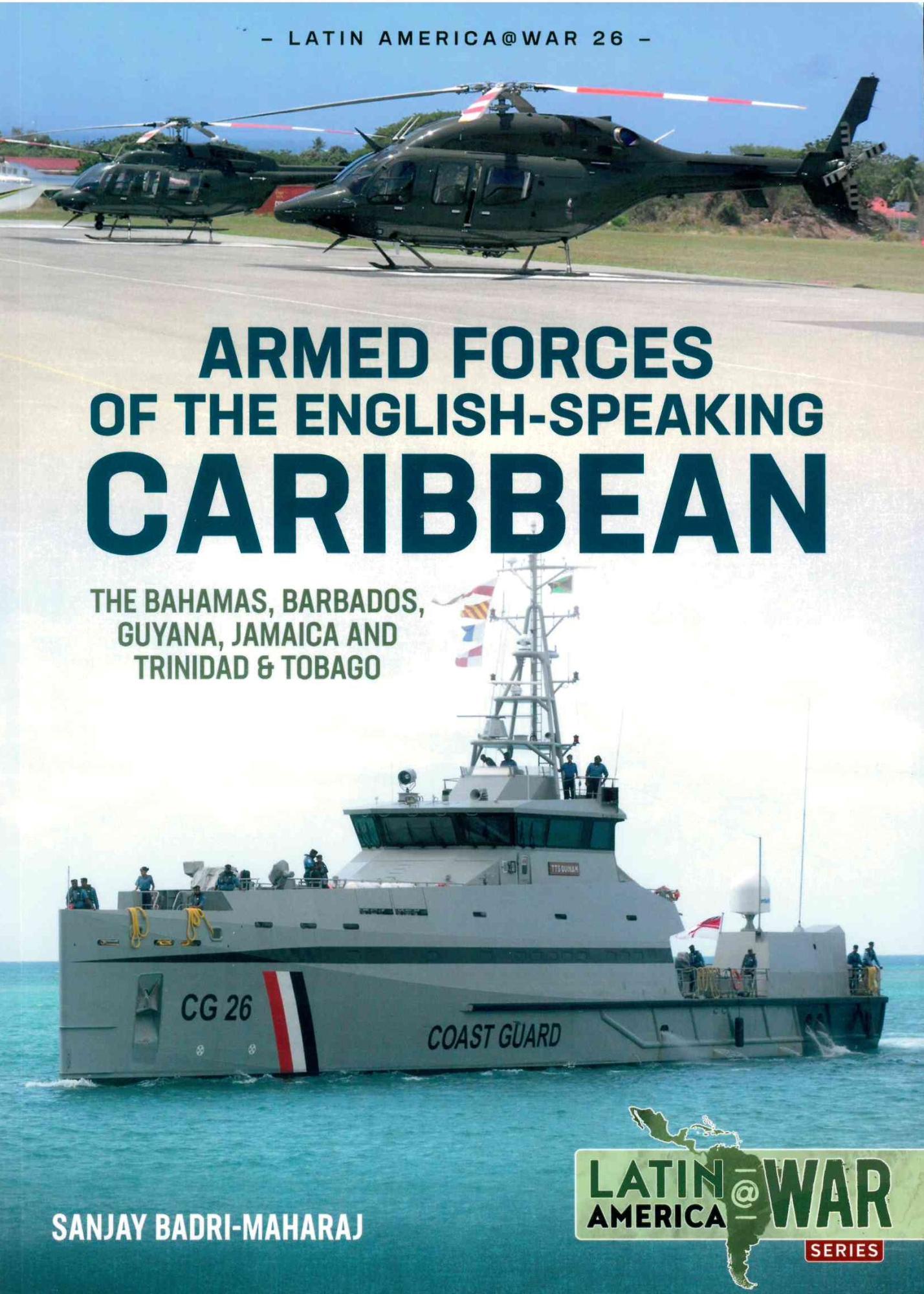Armed Forces of the English-Speaking Caribbean
Armed Forces of the English-Speaking Caribbean: The Bahamas, Barbados, Guyana, Jamaica, and Trinidad & Tobago is authored by Dr. Sanjay Badri-Maharaj, who received his MA and PhD from the Department of War Studies, Kings College London (his thesis was on India’s nuclear weapons program). Dr. Sanjay Badri-Maharaj has written two books - The Armageddon Factor: Nuclear Weapons in the India-Pakistan Context (2000) and Indian Nuclear Strategy: Confronting the Potential Nuclear Threat from both Pakistan and China (2018). What makes him qualified to write a book of this title? He also served as a consultant to the Trinidad Ministry of National Security.
The Caribbean Community (CARICOM) is a diverse region of islands and mainland states with an even more diverse mix of former and current colonies of the English, Spanish, French and Dutch empires, and include almost every ethnicity and religion from across the world. The fifteen CARICOM member states have a enormous disparity in terms of wealth and population. Established on 1 August 1973, the purpose of CARICOM was to foster economic cooperation and integration to coordinate foreign policy. In 2013, the Dominican Republic joined CARICOM and entered into an Economic Partnership Agreement (EPA) with the EU called Cariforum. The biggest threats to the Caribbean and its stability come from internal organized crime and insurgent groups.
While early armaments were primarily from the British Commonwealth (most of the English-speaking Caribbean used the 7.62 self-loading rifle (SLR) provided by Australia and Trinidad’s first armored vehicles were Australian Dingoes), they have evolved to European and Australian suppliers (with Dutch naval craft and Australian Bushmasters in use). American arms and armaments made their appearance, followed by former communist bloc countries. Currently the Chinese are making forays into the region.
This book covers the brief history of the English-speaking Caribbean from when the former colonies earned their independence from Britain in the 1960s and 1970s. The five countries in the book (Bahamas, Barbados, Guyana, Jamaica, and Trinidad & Tobago) were part of the English Empire’s post World War II West India Regiment with the establishment of three battalions of the West India Federation. By 1962 the unit was disbanded. While the five countries have a shared history, they are uniquely different, and this book highlights their unique composition.
The book is presented logically, complete with photographs, a map, tables and thirteen color profiles composing of the following six chapters:
- Introduction – The English-Speaking Caribbean
- The Bahamas
- The Armed Forces of Barbados
- Guyana
- Jamaica
- Trinidad and Tobago Defence Force
Author Dr. Sanjay Badri-Maharaj does a dive into each of the five countries’ unique challenges, mission, armaments, weapon systems and noteworthy historical events:
The Royal Bahamas Defence Force (RBDF) having the distinction of one of their earlier patrol boats, the Flamingo, being sunk by Cuban MiG-21s in 1980 (then the surviving patrol boat escaping further attacks by running with no lights; instead using the light of cigarettes to operate the boat to safety.
The Barbados Defence Force (BDF) is the smallest of those covered in this book coming in at under 1,000 service members in both the active and reserve forces, a small coast guard and no air assets.
The Co-operative Republic of Guyana is located on the northern mainland of South America and has the largest land mass of the countries covered in this book. Guyana’s focus is on its border conflicts and a government rife with racism and corruption
Jamaica is the largest island in the English-speaking Caribbean and is served by the Jamaica Defence Force (JDF), a brigade sized unit comprising land, sea and air formations. While the largest military presence it is also characterized as professional, although it suffers like the other countries in this book - poor maintenance.
The Trinidad and Tobago Defence Force (TTDF) is perhaps the most experienced military in the English-speaking Caribbean. In the 1970s, the TTDF experienced a mutiny, but regained favor in 1990 by stopping an Islamist insurrection.
CARICOM, particularly the English-speaking Caribbean have evolved from former colonies into democracies, each with their own challenges. Their foreign policies and arms procurements has displayed a break from their pasts and Western leanings. Armed with their individual identities, their interests, and policies line up with how they procure military hardware, CARICOM displays cooperative spirit when faced with security challenges and humanitarian crises. The introduction of China adds a new dimension to this region. Armed Forces of the English-speaking Caribbean goes a long way to describe the history and evolution of this little-known region’s military forces. It is a good reference for modelers as there are older armored vehicles (Dingoes, Shorlands, etc) and newer APCs in the form of V-150s, Tigers and Bushmasters. The aircraft are primarily support variants based on civilian models. The naval craft are impressive and well documented. There are some great inspirations for variations on common themes; after all, how many Bushmasters in Jamaican three tone schemes have been on modelers’ shelves?
This book is Dr. Sanjay Badri-Maharaj’s first installment for Helion and its @war series. He is off to a good start, writing about rarely covered topics. My biggest niggle is the lack of color photographs in the text of the book (the only color photos are the covers), although the black and white photographs are of good quality.
Profuse thanks to Casemate and IPMS/USA for providing the review sample.















Comments
Add new comment
This site is protected by reCAPTCHA and the Google Privacy Policy and Terms of Service apply.
Similar Reviews